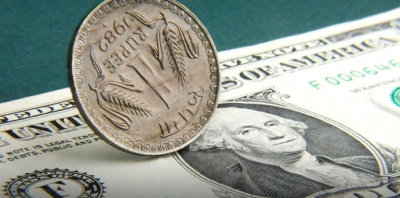Mumbai: The rupee breached the 88-mark for the first time and closed at an all-time low of 88.09 against the US dollar Friday, registering a sharp decline of 51 paise amid a massive outflow of foreign funds and heightened tensions over a trade deal between India and the US.
Forex traders said the rupee is under persistent pressure amid the imposition of steep tariffs by the US compounded with persistent foreign fund outflows and month-end dollar demand.
Moreover, a negative trend in domestic equities dented market sentiments.
At the interbank foreign exchange market, the rupee opened at 87.73 against the US dollar, then lost ground and fell to its lowest-ever intra-day level of 88.33. The domestic unit settled for the day at an all-time low of 88.09 against the greenback, registering a sharp fall of 51 paise over its previous close.
On Thursday, the rupee rose by 11 paise to close at 87.58 against the US dollar.
This is the first time the rupee has breached the 88/US dollar level. Its previous lowest-ever closing level was recorded at 87.88 on August 5 this year, while the earlier record of intra-day low was seen on February 10 when the unit had touched 87.95 against the greenback.
“We expect the rupee to trade with a negative bias as additional trade tariffs on India by the US raise worries over India’s trade deficit. Weak domestic markets and selling pressure from FIIs may pressurise the rupee further,” said Anuj Chaudhary, Research Analyst Currency and commodities Mirae Asset ShareKhan.
The Reserve Bank of India, in its latest bulletin on Thursday, said persisting uncertainties related to the US trade policies pose downside risk to the overall demand in the Indian economy, while the inflation outlook for the near-term has become more benign than anticipated earlier.
Commerce and Industry Minister Piyush Goyal on Friday said the government will soon announce various measures to expand the country’s domestic outreach and global foray, aiming to boost exports.
He also assured exporters of all support in dealing with the current global uncertainties at the trade front, which were caused by the imposition of high tariffs.
The US has imposed a steep 50 per cent tariff on Indian goods entering America from August 27. This high duty is expected to impact exports of certain labour-intensive sectors like textiles, leather, footwear and shrimp.
Meanwhile, the dollar index, which gauges the greenback’s strength against a basket of six currencies, rose 0.14 per cent to 97.94.
“Dollar may continue to remain weak on rising rate cut expectations in September. Traders may take cues from prelim core PCE price index and personal spending data from the US. USD-INR spot price is expected to trade in a range of 87.90 to 88.70,” Chaudhary said.
Brent crude, the global oil benchmark, was trading 0.76 per cent lower to USD 68.10 per barrel in futures trade.
On the domestic equity market front, Sensex dropped 270.92 points to settle at 79,809.65, while the Nifty declined 74.05 points to close at 24,426.85.
Foreign Institutional Investors offloaded equities worth Rs 8,312.66 crore on Friday, according to exchange data.
Anindya Banerjee, Head Currency and Commodity Research, Kotak Securities, said there has been steady hedging demand from importers as well as foreign fund outflows.
“Corporate outflows also added pressure, while stop-loss orders were triggered once USD/INR crossed 87.60 and later the 88.00 level,” he said, adding that the RBI is expected to intervene “if spot approaches 88.50, though a sustained reversal would require a rollback of the additional US tariffs”.
Meanwhile, the government data released on Friday showed India’s economy grew by a stronger-than-expected 7.8 per cent in April-June, its fastest pace in five quarters.
The RBI on Friday said the country’s forex reserves dropped USD 4.386 billion to USD 690.72 billion during the week ended August 22. The overall reserves had jumped USD 1.488 billion to USD 695.106 billion in the previous reporting week.
PTI

